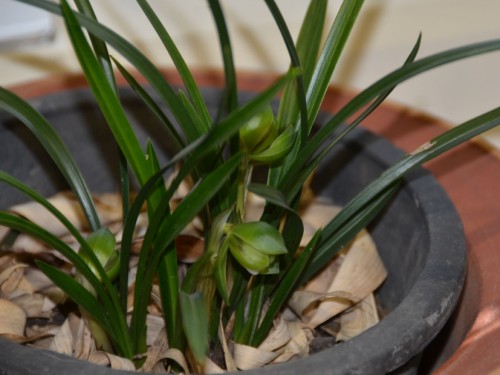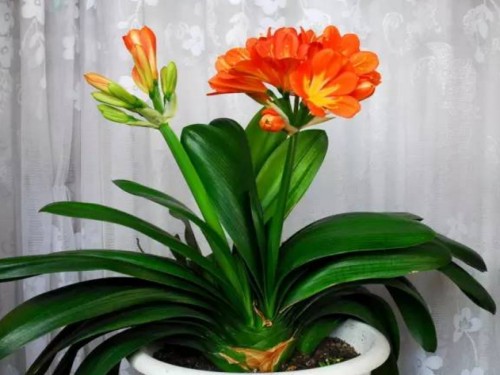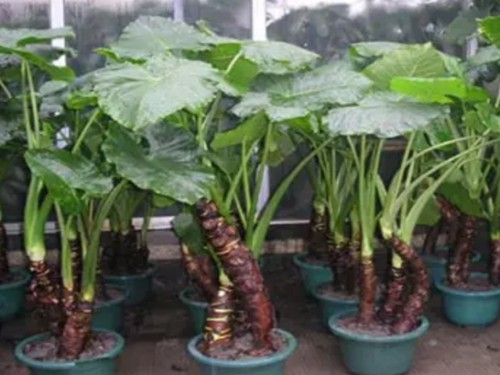How to remedy the rotten roots of orchids? How to deal with it?
Some flower lovers who are beginners to raise orchids often do not know much about the habits of orchids and find it difficult to raise orchids well, burn their tips and pour seedlings, and there are only a few dead piles left after a year or two. Most of the reasons are caused by the rot of Langen. As the saying goes, orchids grow roots first, with good roots, exuberant leaves and fragrant flowers.
In order to cultivate a good orchid, it is necessary to cultivate the orchid root well, the root group develops vigorously, the root system is developed, and the absorption, transport, photosynthesis, respiration and energy storage and accumulation of water and nutrients can be carried out normally. the growth rate, reproductive ability and flowering rate will also be enhanced. Otherwise, the root system is not good or rotten, lost, water, nutrient absorption and transport is blocked, photosynthesis, respiration and other capacity decreased, the orchid will gradually collapse and die.

The rotten root of orchid is a very headache problem. Without finding out the reason, it will happen repeatedly every year. Rotting root means that there is something wrong with the environment or management. Only by finding out the cause of the rotten root can we improve the environment or cultivate the orchid well.
[environmental reasons]
1. the temperature is too high:
High temperature + direct sunlight + drying = orchid dehydration = thermal injury = scorched tail of orchid leaf, black spot or rotten root; high temperature + humidity + lack of ventilation + watering = physiological obstacle = scorched tail or rotten root.
2. the temperature is too low:
The temperature is below zero = water freezes = Langen frostbite.
3. Insufficient light (less than 1000 Lux) + muggy environment + too humid material in the basin = physiological obstacle (rotten root)
[reasons for planting materials]
1. Temperature above 30 degrees + unfermented organic material + sufficient moisture = rotten roots of orchids
2. The fertilizer content of organic material is too high to exceed the tolerance of orchid root = rotten root of orchid.
3. Planting materials can not meet the local climatic environment (according to the environmental →, select appropriate planting materials → proper watering management)
[watering reason]
1. Stagnant water: the orchid pot material is wet for a long time = it affects the air exchange of orchids and rotten roots.
2, breathable: the lower the temperature, the slower the breathing, the longer the watering interval; the higher the temperature, the faster the breathing, the more waste gas will be produced, so when the temperature is high, the watering interval will be shorter. The use of pouring water to replace the waste gas in the basin can also strengthen ventilation and make fresh air enter the basin.
[basin reason]
1. The sun should not shine directly on the black plastic basin, which will produce high temperature and rotten roots.
2, the environment is hot, dry and windy, it is best to use black plastic pots without holes, while the environment is humid, cold and windless, and it is best to use black plastic pots with holes.
[reasons for fertilization and spraying]
1. Fertilization and spraying should avoid high temperature, strong light and dry environment, which is easy to cause fertilizer injury and drug injury to rot the root of orchid, so fertilizer or spray should be applied or sprayed at a certain time after watering, which can prevent the occurrence of fertilizer injury or drug injury.
2. A small number of fungicidal drugs will cause rotten roots, the main reason is that some orchids belong to fungi, and orchids in the roots of orchids are also fungi, so they will have adverse effects. Wei Chang elders said very well, there are a lot of old drugs are very effective, and there is no drug harm, but the new drugs must be tried before they can be used.
For those reasons, how to remedy the rotten roots of orchids? Here are the remedial measures for the rotten roots of orchids:
1. Control sunshine
After changing the basin for a period of time, can not be exposed to the hot sun, should be placed in the sun, ventilation place, but should pay attention to the wind should not be too strong so as not to be affected.
2. Rational watering
In the cultivation and management, the use of water should be strictly regulated, and the basin soil should be semi-wet and dry, neither white and dry nor too wet. In case of rainy days, you should move to the place where the rain is sheltered, and try to control the humidity of the basin soil to ensure that it takes root normally.
3. Stop fertilization
Change the small basin: the basin is large and easy to accumulate water.
Excessive water fur: loose, breathable, no fat, flat.
Replacement of old soil: new soil has no fertilizer, weak orchid is not fertilized, which is beneficial to growth.
Deep seed and dry seed: the process of seedling unearthing is longer, the nourishment is sufficient, and it grows steadily after being unearthed.
Aggravate the sand quality: enhance the drainage and air permeability of the soil layer to avoid the emergence of new seedlings.
Immortal soil root: immortal soil species weak seedlings, Langen is effectively maintained.
Do not apply fertilizer: the root system is not good, how to talk about receiving fertilizer. Therefore, fertilizing weak seedlings is not rejuvenation but destruction. (orchid weak can be saved, Xinturi weak orchid, soil dry weak orchid Shu, avoid fat weak orchid work. )
4. Change the basin as soon as possible
When it is found that the rotten roots of orchids, it is necessary to re-change the soil and plant materials on the pot, and the plant materials should pay attention to the quality and water absorption performance. It is better to burn soil or dry soil, charcoal and other plant materials, and some coarse sand can also be properly mixed in the root Reed part, and the effect is better.
5. Pay attention to planting
In addition to ensuring that the basin soil is open to water, the plant material from the lower part of the Reed head to close to the root should be dense, and the Reed head should be planted deeper appropriately, which not only plays a protective role, but also prevents the Reed head from shaking or floating off the soil surface. Rotten roots and atrophied and yellowed leaves should be cut off to reduce nutrient loss, so that the nutrition of Reed head can be stored to maintain root development.
Time: 2019-06-01 Click:
- Prev

The treatment method of rotten Root of Cymbidium
After the flowers have rotten roots, they will quickly cause the death of the aboveground parts. If it is a non-infectious rotten root, the plant should be removed from the basin as soon as possible, cut off the rotten root, and carefully maintained in the semi-shady place after re-potting. If it is discovered early and dealt with in time, it can be saved, but if it is too long and the water loss is serious, it will not be cured.
- Next

What about the rotten roots of Guanyin in potted plants?
Dishui Guanyin is a trade name, also known as Dishui lotus and bergamot lotus. Other common names include trace taro, wolf poison (Guangdong), wild taro, mountain taro, big root taro, big worm taro, celestial taro, Tianmeng, and so on. Taiwan's calla lotus refers to sea taro, so what about the rotten roots of dripping water Guanyin? Dishui Guanyin is perishable in summer.
Related
- Fuxing push coffee new agricultural production and marketing class: lack of small-scale processing plants
- Jujube rice field leisure farm deep ploughing Yilan for five years to create a space for organic food and play
- Nongyu Farm-A trial of organic papaya for brave women with advanced technology
- Four points for attention in the prevention and control of diseases and insect pests of edible fungi
- How to add nutrient solution to Edible Fungi
- Is there any good way to control edible fungus mites?
- Open Inoculation Technology of Edible Fungi
- Is there any clever way to use fertilizer for edible fungus in winter?
- What agents are used to kill the pathogens of edible fungi in the mushroom shed?
- Rapid drying of Edible Fungi

